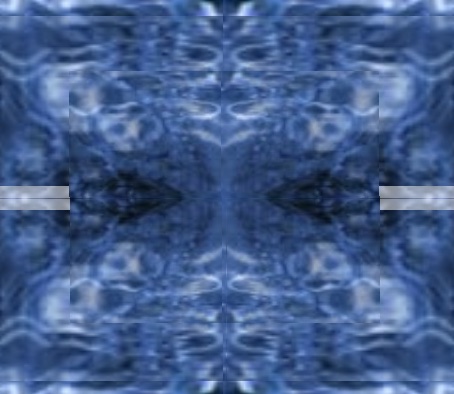In our lived experience we navigate both an external world of objects (from smallish items we handle to wide landscapes in which we move around, and including, most importantly, other living beings with whom we interact) and a subjective stream of psychological states (perceptions, emotions, memories, thoughts, …), some of which we can control and some of which simply happen to us. This is how the surface of reality presents itself to us. But both the external world of objects and the subjective stream of psychological states have a certain depth to them: they exhibit recurring patterns. (Some such patterns are intersubjectively verifiable, and thus presumably “there” in the external world as stable and repeating phenomena; some are merely in the eyes of the beholder and, if recognizably recurrent, would be based on psychological dispositions found in some people and not in others, i.e. they would be characteristic of a specific psychological make-up.) Of course, we may navigate the external world and the subjective stream without being aware of those patterns: our lived experience would thus remain on the surface level of reality, ignorant of those depths. But when we start seeing the patterns, seeing through the surface appearances of both the external world and the subjective stream, we’re reaching into those depths, and noticing the patterns, we will start asking what to make of them.

1. Keeping with the notion of depth, we might speculate that such patterns, when they occur, are projections whose source is located in those depths. (We’re moving along the lines of Plato’s cave myth here.) And since they appear on two major areas of our lived experience, we may distinguish between two types of projection. We can take a helpful clue once more from Murray Stein’s essay on Narcissus, where he finds two different notions of projection embedded in the various psychological interpretations of that mythologem.
The first is “projection out upon an external object from an inner space behind the subject’s consciousness” (Stein, Soul: Treatment and Recovery, 27), the common notion that a person may “project” an unconscious complex onto another person encountered in the external world, thus perceiving them in a way that is dictated by the complex and has little to do with their actual attributes. (The clichéd instance being a man who is unconsciously driven by a “mother complex” and so tends to perceive his wife in terms of the mother archetype, rather than in her full individuality as a real person.) What comes from an “inner space” (in Stein’s terms) here is the unconscious complex. But note that we don’t have to understand this necessarily in the vein of Jung’s collective unconscious: the “inner space” might as well be entirely personal (fixated childhood trauma or the like); the notion of projection (understood as “projecting out”) is neutral with respect to how we think about that space. In any case, what is distinctive about the first type is not the origin of the projection, but the receiving surface: it is an object (broadly understood so as to include other people) in the external world.
The second type is “projection from within that inner unconscious space onto the subject’s consciousness. The ego is screen here and is subjected to receiving a projection; it is the ‘hook’ and the ‘projection carrier.’ In this view of projection, our various subjective states, perceptions, emotional reactions, and identities are the mirrored images of archetypal contents or ‘souls.’” (Ibd.) Again, although Stein spells out the “inner unconscious space” in terms of archetypal contents here (implying that they originate in the Jungian collective unconscious), this is not a necessary ingredient. The difference between the two types of projection would remain even if we understood, again, the “inner space” in personalistic terms. What is relevant for the second type is that now the receiving surface is the subjective stream: our psychological states are patterned via projection from an “inner space” — they can be projection receivers just as other people can.
2. If projections originate from an unconscious inner space, they are not “made” deliberately: they “happen” to a person. That the ego is the receiver of projections thus doesn’t mean that the second type is something consciously done: it’s just as unconscious as the first type.
However, the two types should diverge more sharply if and when the person starts seeing through the projections, recognizing the patterns and going beyond the “befuddlement”. With the first type, this would change the ego personality, but not the external object that was the projection receiver: that remains the same (although it will be perceived differently by the person who has just withdrawn the projection). But with the second type, the ego had been itself the projection receiver; again it will change as a result of the withdrawal of the projection. Thus one crucial difference between the two types is that a withdrawal of the projection will have very different consequences for the screen.
Now, although the making of projections is unconscious and therefore not ego-driven, the withdrawing of projections requires at least conscious cooperation if not initiative — which means that with the second type, the resistance of the ego against change will likely be stronger. If that is true, then we should expect a change in the perception of some external object to be easier than a change of self-perception. And note that this consideration is independent of any questions of introversion and extraversion: it doesn’t depend on personality type, but is entirely based in the structure of the psychodynamic.
3. And yet, this is a counter-intuitive result, for its consequence is that an awareness of the patterns, a “seeing-through” the surface reality and movement towards the depth of the underlying projection source, would be easier (and thus presumably more common) when applied to the external world, rather than the subjective stream. In practice, however, we associate “going psychological” (looking out for those patterns) rather with attention to the subjective stream (whether in the traditional form of association techniques and dream analysis, or the more fashionable forms of body work and meditation from the recent few decades). It is likely, then, that other factors support such a focus, even if the structure of the projection types themselves should make it the harder choice.




[…] other people’s behavior). But this clarification holds only as long as we do not include the notion of projection in our considerations. If what the other person (the observer of the the compulsive behavior) is […]